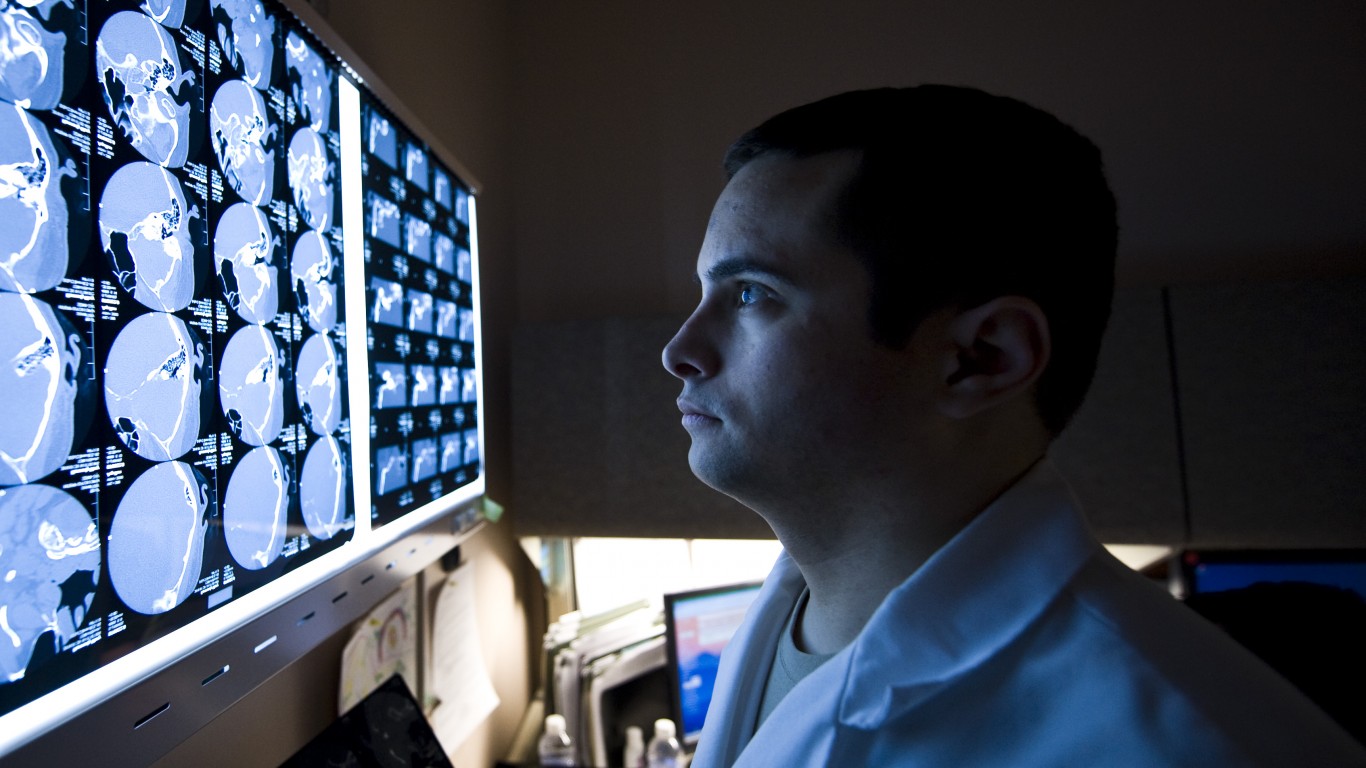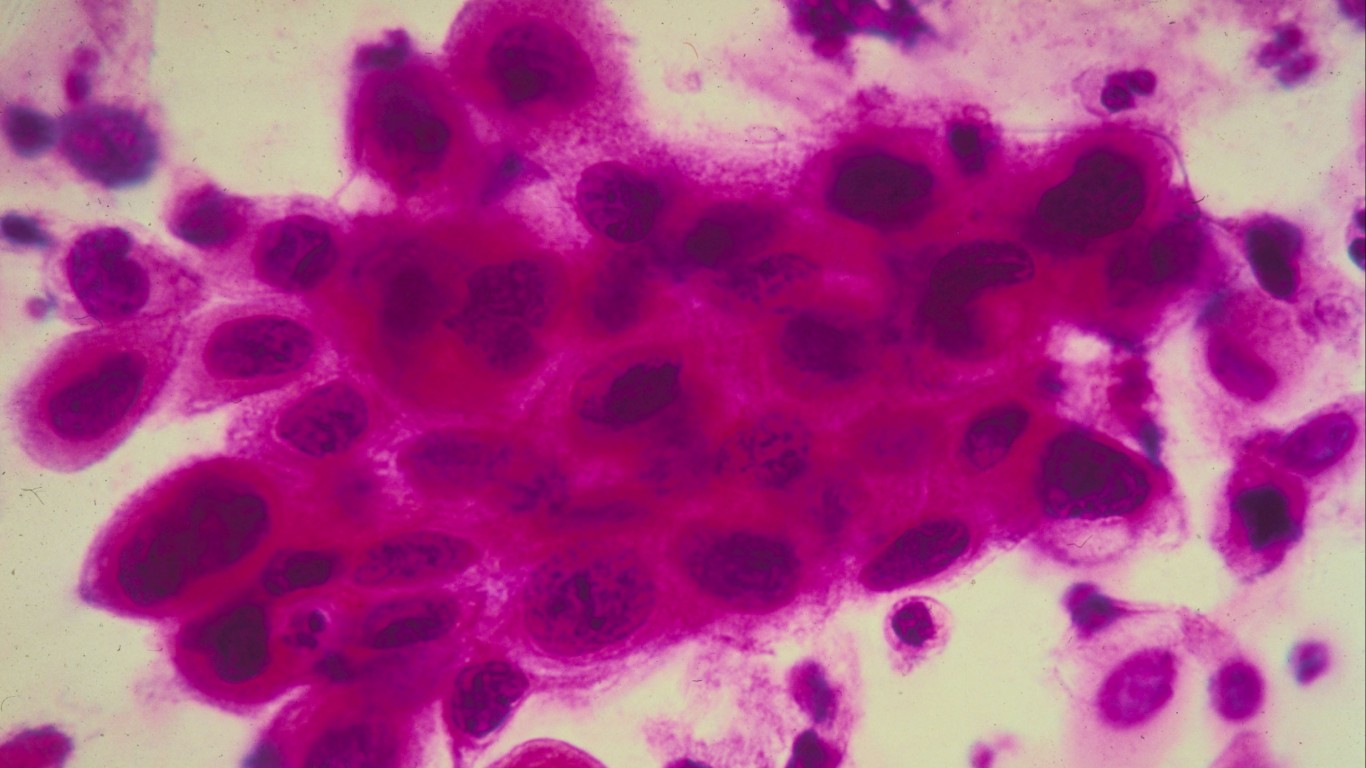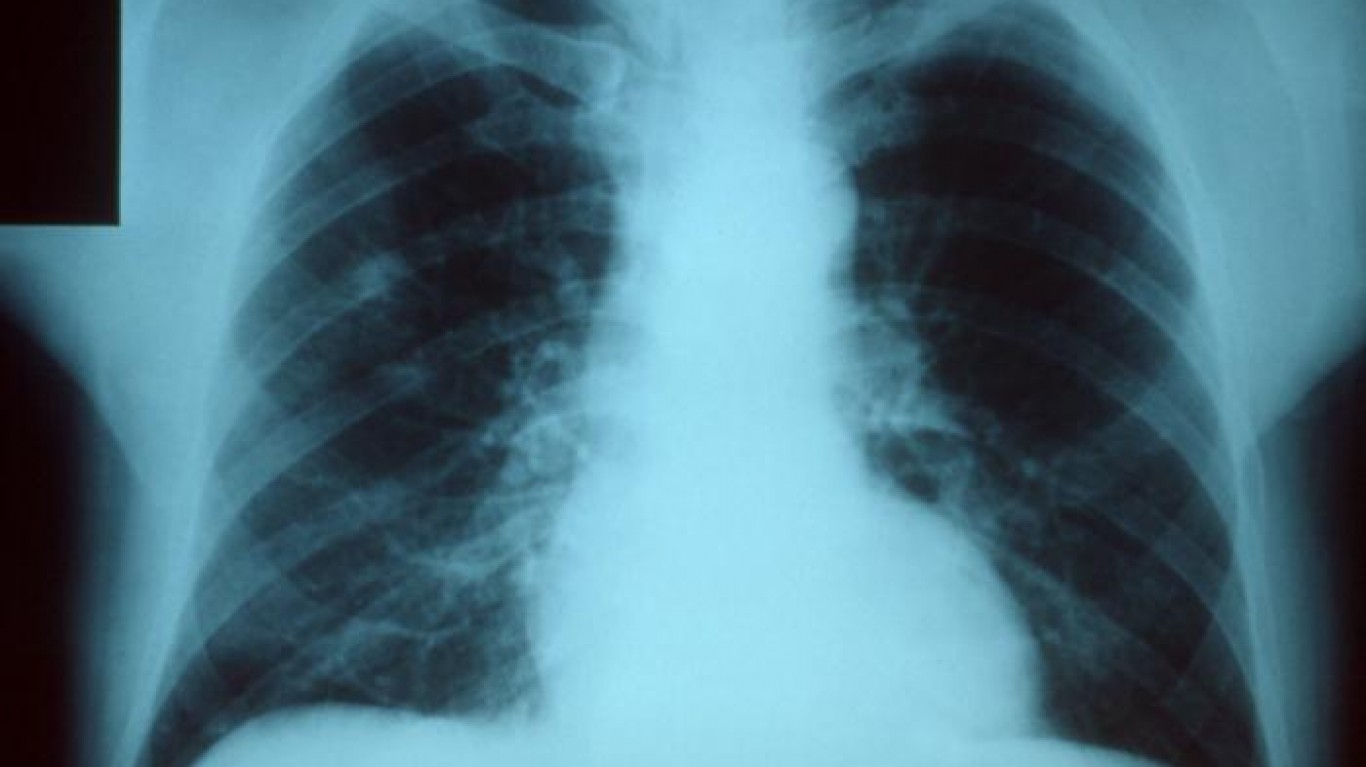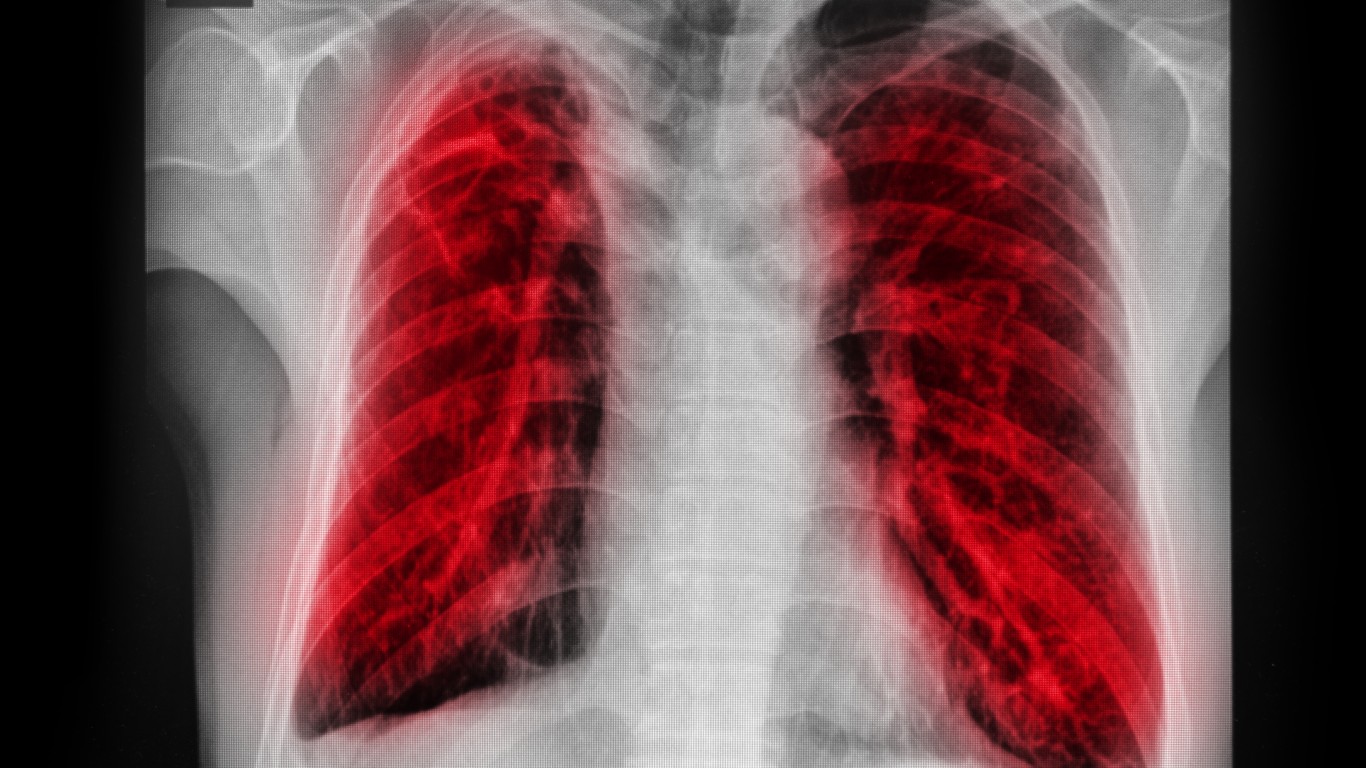Special Report
Excessive Drinking Is Less Than You Think: 23 Ways a Drinking Habit Can Harm You

Published:

What counts as excessive drinking? Less than most people may think.
People who drink a glass of wine every other night with dinner and maybe more on weekends are usually considered social drinkers. But, according to health guidelines, this may be too much.
Women who consume eight or more alcoholic drinks per week are considered heavy drinkers. For men, that number is 15 alcoholic drinks a week, according to the Centers for Disease Control and Prevention.
Also important is the amount of alcohol in a single drink. Many people are surprised to learn what counts as a standard drink. A standard drink of wine is considered to be 5 ounces and for beer it is 12 ounces. Adjusting for the standard drink sizes may push many from the social drinkers status to the heavy drinker one.
Alcohol’s impact on the body starts with the first sip. Moderate drinking is not usually a concern for most people, but the cumulative effect of drinking excessively — and for some people even moderately — can take a toll.
To compile a list of 23 effects of long-term excessive drinking on the body, 24/7 Tempo reviewed dozens of medical publications and government health agencies websites, including the National Institutes of Health and the CDC.
Approximately 19.0% of adults in the U.S. report regularly consuming unhealthy amounts of alcohol. In some states, excessive drinking rates are higher. These are the drunkest states in America.
Click here to see alcohol and its associated health effects on the body

1. Brain shrinkage
While the brain naturally shrinks as we age, heavy alcohol users are at higher risk of brain shrinkage. Long-term exposure to alcohol can contribute to the brain cells getting smaller faster. Research is less consistent about moderate alcohol users and brain shrinkage. Brain shrinkage can have a major effect on important functions, including memory, learning ability, and decreased blood flow to the brain.
[in-text-ad]

2. Cancer
Chronic heavy consumption of alcohol increases the risk of developing certain cancers, specifically of the liver, throat, and the esophagus. Back in 1988, the World Health Organization declared alcohol a Group 1 carcinogen, meaning there is sufficient evidence it can cause cancer in humans.
Alcohol also increases the risk of breast cancer in women. The increased risk of breast cancer may be due to the fact that alcohol — in addition to damaging DNA in cells — increases estrogen levels in the body, and breast cancer cells feed on estrogen.

3. Change in menstrual cycle
Over a period of time, drinking excessive amounts of alcohol may cause irregular menstrual cycles, their cessation, or menstrual cycles without ovulation. Alcohol increases the level of estrogen, which may affect normal hormonal fluctuations necessary for ovulation.

4. Change in speech
Slurred speech is often one of the first symptoms of excessive alcohol consumption. Short-term speech slurring indicates drunknesses, or a person with a blood alcohol concentration of around 0.1%, above the federal limit of 0.08% allowed for driving.
Difficulty saying words is called dysarthria, and while being drunk may cause temporary dysarthria, chronic alcohol use can cause this condition to become permanent.
[in-text-ad-2]

5. Chronic pancreatitis
Excessive alcohol consumption is a leading cause of chronic pancreatitis, an inflammation of the pancreas that gets worse over time and cannot be treated. The swelling of the blood vessels in the pancreas as a result of the condition can prevent proper digestion. Symptoms of chronic pancreatitis include constant pain in the upper stomach, vomiting, and weight loss.

6. Diabetes
Heavy drinking over a long period of time may prevent the proper balancing of blood sugar in the body, leading to an increased risk of developing diabetes. Chronic drinking may lead to chronic inflammation of the pancreas, which can hinder the organ’s ability to produce, store, and release insulin — a hormone that regulates blood glucose level — which may potentially lead to diabetes.
[in-text-ad]

7. Weakening or thickening of the heart
Chronic and heavy alcohol consumption can cause serious damage to the heart by weakening and thickening the heart muscles. The condition, which affects the heart’s ability to pump blood, is called alcoholic cardiomyopathy.

8. Hallucinations
Hallucinations are usually associated as being a side effect of getting sober. People with alcohol dependence may experience complications such as hallucinations if they quit drinking cold turkey. Alcohol-induced psychosis, which is characterized by auditory hallucinations, feelings of paranoia, and fear, can also occur during acute intoxication and in chronic drinkers. Why chronic drinkers may have hallucinations is not clear, and the condition is a rare complication of excessive alcohol consumption.

9. Hearing loss
There are several ways in which alcohol consumption can impair hearing. Excessive drinking over a long period of time can damage the tiny hair cells in the inner ear, which translate sound and play an important role in maintaining balance. High alcohol consumption over years can also damage the central auditory cortex of the brain, limiting a person’s ability to process sounds.
[in-text-ad-2]

10. Heart disease
Chronic heavy drinking is one of the leading causes of heart disease, according to the CDC. In addition to cardiomyopathy (No. 7), alcohol may cause several other complications of the circulatory system, including high blood pressure (when the heart is pumping blood with more force than normal through the arteries), which can increase the risk of heart attack and stroke.

11. Inability to form memories
Alcohol can interfere with how the brain makes memories. Waking up with no recollection of what a person did while drinking is not uncommon and is a short-term effect of excessive drinking.
Chronic alcohol use may result in permanent brain damage, which can lead to Wernicke-Korsakoff syndrome. This disorder of the nervous system, caused by vitamin B1 deficiency, is characterized by memory loss and the inability to form new memories.
[in-text-ad]

12. Irregular heartbeat
Excessive drinking over a long period of time can cause damage to the heart, including causing arrhythmias, or irregular heartbeats. Also known as atrial fibrillation, irregular heartbeats increases the risk of stroke, heart failure, and other heart-related complications. Even low alcohol use increases the risk of irregular heartbeats, and those who suffer from the condition are advised to avoid alcohol.

13. Liver damage
The liver’s function in the body is to remove harmful substances from the body. But chronic and excessive alcohol consumption can damage the liver, preventing it from functioning properly. A damaged liver leads to toxins and other waste building up in the body.
As a result of chronic excessive drinking, the liver’s healthy tissue starts to scar, destroying the organ and eventually leading to alcoholic liver cirrhosis, the most advanced form of liver disease. In some cases, the damage to the liver cannot be reversed.

14. Lung infection
People who drink excessive amounts frequently may have a harder time fighting off bacteria and viruses and are more susceptible to lung infections.
Heavy drinking over time is also recognized as an independent factor contributing to acute respiratory distress syndrome, a breathing disorder. Heavy drinkers are three to four times more likely to develop the condition, which has a mortality rate of up to 50%.
[in-text-ad-2]

15. Muscle cramps and stiffness
People who drink heavily often may experience muscle cramping and weakness. Excessive drinking over long periods of time may eventually lead to atrophy (decrease in muscle mass, which is sometimes referred to as muscle death).
How exactly alcohol leads to muscle loss is not entirely understood. One theory has to do with nutrition. Alcohol can negatively affect the body’s ability to absorb nutrients, which muscles need to remain healthy.

16. Numbness and tingling
Alcohol may cause damage to the central nervous system, which can result in numbness and tingling in the legs, feet, and arms. Nerve damage happens over time, and symptoms slowly get worse if the drinking continues. More serious symptoms of nerve damage caused by excessive drinking include burning and freezing pains, lack of motor coordination, and unsteady gait.
[in-text-ad]

17. Osteoporosis
Long-term excessive drinking may prevent the body from keeping bones strong and healthy. Drinking increases the risk of thinning bones, or osteoporosis. Alcohol interferes with the body’s ability to absorb calcium and vitamin D, both of which are crucial for healthy bones.
Bone loss can get worse for years before a person experiences symptoms or until he or she falls and fractures a bone.

18. Pneumonia
People who drink excessively over a long period of time are more likely to develop pneumonia, an infection of the lungs causing the air sacs to fill with fluid, making it harder to breathe. Alcohol can cause lung inflammation, impairing a person’s gag and cough reflexes, which are defensive mechanisms of the respiratory tract. This increases the risk of pneumonia.

19. Poor sleep
Alcohol is a depressant. It wears off in the middle of the night, often causing people to wake up. Alcohol is known to reduce the rapid eye movement stage of sleep in which people dream or prevent people from being deeply asleep. The brain wave patterns of a sleeping person who drank at night are similar to the brain wave patterns of people who are awake but resting. Some types of alcohol are also high in sugar, raising your blood sugar level and keeping you awake.
[in-text-ad-2]

20. Sexual dysfunction
Men who drink too much are more likely to experience erectile dysfunction. There is some evidence linking chronic heavy use of alcohol to an increased risk for long-term erectile dysfunction. Heavy drinking can also prevent testosterone production and lower libido.

21. Tuberculosis
Excessive drinking may cause damage to the lungs, and people who drink heavily over a long period of time are more likely to develop tuberculosis, a disease caused by a bacteria attacking the lungs. According to a 2009 study, about 10% of all tuberculosis cases worldwide are linked to alcohol consumption.
[in-text-ad]

22. Ulcers
Ulcers are relatively common among people who repeatedly drink heavily. An ulcer is a break in the membrane of an organ that hinders its proper functioning. Ulcers can be fatal if they are not caught early on because they can start bleeding internally.

23. Weight gain
Alcohol is a source of excess calories, but this is not the only way drinking can cause weight gain. Alcohol interferes with the body’s fat-burning functions.
Drinking supplies the body with calories but no nutrients. The calories from alcohol are the first to be burned by the body, delaying the fat-burning process, which comes after the body has burnt carbs and proteins for energy. This contributes to extra fat storage.
Choosing the right (or wrong) time to claim Social Security can dramatically change your retirement. So, before making one of the biggest decisions of your financial life, it’s a smart idea to get an extra set of eyes on your complete financial situation.
A financial advisor can help you decide the right Social Security option for you and your family. Finding a qualified financial advisor doesn’t have to be hard. SmartAsset’s free tool matches you with up to three financial advisors who serve your area, and you can interview your advisor matches at no cost to decide which one is right for you.
Click here to match with up to 3 financial pros who would be excited to help you optimize your Social Security outcomes.
Have questions about retirement or personal finance? Email us at [email protected]!
By emailing your questions to 24/7 Wall St., you agree to have them published anonymously on a673b.bigscoots-temp.com.
By submitting your story, you understand and agree that we may use your story, or versions of it, in all media and platforms, including via third parties.
Thank you for reading! Have some feedback for us?
Contact the 24/7 Wall St. editorial team.